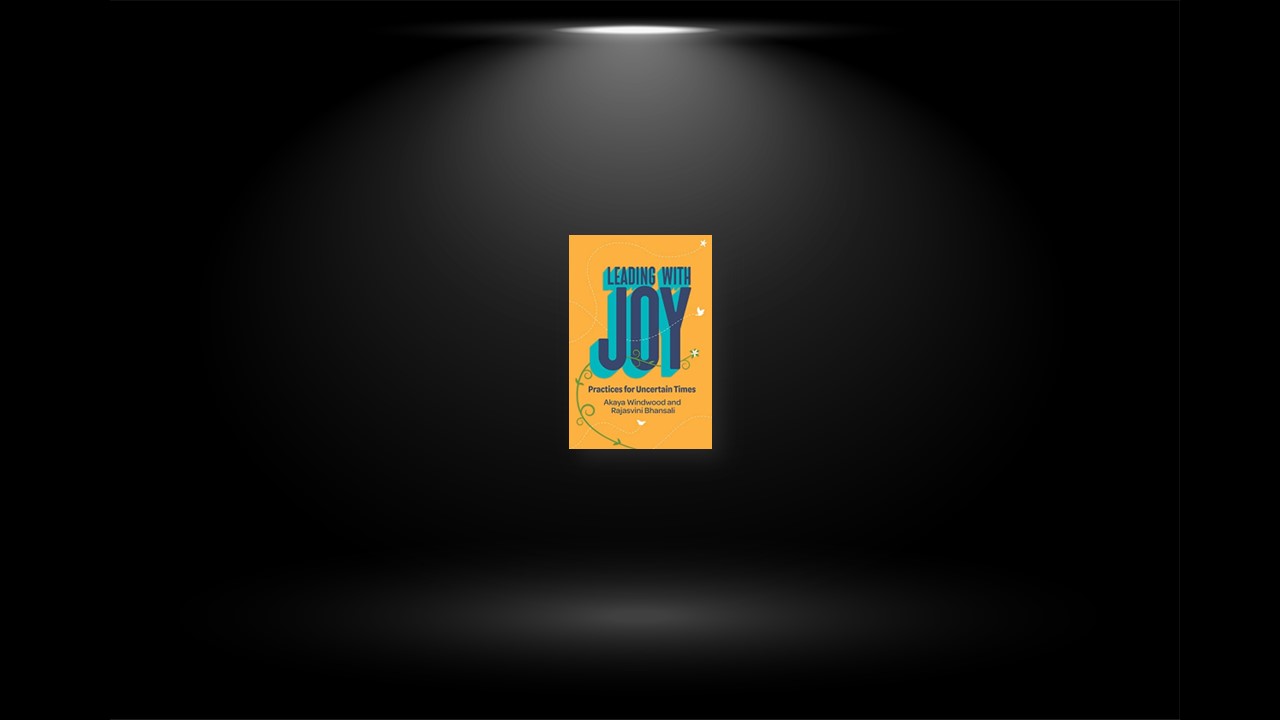Purpose and Vision
Cultivating joy requires commitment and practice. Clarity of both purpose and vision centers us in why we lead and what we want to happen in our work and the world. It is our north star and our place of deepest inspiration. Without it, our leadership can wither and become transactional rather than transformative. Work grounded in purpose and vision is a wonderful source of joy.
Discovering our purpose is challenging to do alone. We invite you to chat with a pal or a group of folks you care about, and think back on the moments in your life that brought you joy or deep satisfaction. Tell each other some of the stories of those times.
Do you notice a theme or a thread that connects those moments? Is there an overall story to be told? Try and name it in a simple sentence like “My purpose is to ask hard questions so that people can grow.” Or “My purpose is to bring hope wherever I go.” Don’t rush with this—our understanding of our purpose deepens over time. As you do this, notice how it feels to talk about joy and purpose.
Humility, Experimentation, and Growth
Joy is generated from and lives in the heart, not the ego. We cannot “think” our way to joy. There is no hierarchy of expertise, and no human is better than any other. Remembering that we are only a small and necessary part of a vast human family allows us to do our particular work—to do what is ours and only ours to do—and let others do their particular work. This frees us, because no one of us can possibly do everything that needs doing but together we can accomplish miracles. Being clear about our particular work with purpose and joy is an act of liberation.
Many of us have been taught to think that feedback is a bad thing and should be avoided. In a society that heralds achievement over failure and stability over change, it’s tempting to engage in confirmation bias and validation-seeking behaviors. The last thing we want to hear from people we respect or after getting so much done is, “You don’t have it all together as much as you may think you do.”
But by welcoming thoughtful (or even challenging) feedback, we can learn from a mirror held up to us, allowing ourselves to go deeper without self-judgment. And with deep self-kindness and an open heart and mind, we can allow ourselves to grow. Often what we’ve learned from our own family, community, and cultural upbringing is to shut down or fight back against the critic. To shrink in the face of criticism, however, is to fall into the trap of taking down our own leadership. When we avoid feedback, we cannot grow.
Preserving and Honoring Individual and Collective Dignity
Joy comes from preserving and honoring the dignity of all whom we encounter in our leadership journey. Often, we operate from a place of prioritizing tasks and accomplishments over relationships. This, however, does not lead to transformation. When we uphold the dignity and agency of the people we are trying to lead, influence, or organize, our impact can be so much greater and last long beyond our time in leadership. The vignettes in this section highlight the many ways in which we find joy in dignifying and lifting others, just as we do for ourselves.
Close your eyes, take a deep breath, and remember the first time you felt worthy. For some, this moment may be the first time you’ve thought about it. The truth is that you are, and every human is. Notice what’s true for you. Notice what happens in your body as you contemplate the fundamental truth of your worthiness. This has been true from the moment of your birth. Imagine what might be possible if you never questioned it again.
Close your eyes, take a deep breath, and notice that everyone around you is worthy, and no one is more or less so than anyone else. Notice what happens in your body as you contemplate that fundamental truth. Imagine what might change in your leadership if you remembered and led from that truth every day.
Healing, Forgiveness, and Redemption
There is much to be enraged by these days. When we as leaders hold on to unhealed wounds, we can inflict harm on the people we seek to lead. Committing to our own healing then becomes critical for creating the conditions in which all can thrive. It is a leadership imperative to continuously work on making ourselves whole. We can find much joy in forgiveness and redemption, not only because they are right, but also because without them, the conditions for joyful exploration, collaboration, and experimentation simply cannot be created. Forgiveness releases us from the bonds of past trauma and creates room for us to be more fully human. It allows us to lay down old histories and lay new spacious and liberating foundations. Forgiveness can be quite challenging, but it is a crucial step on the path toward joy.
Every leader makes mistakes—it’s impossible not to. Sometimes we hurt those around us. We don’t know a single human who is unscathed by some trauma. When we refuse to forgive those who have “wronged” us we remain tethered to that person energetically, and that can drain our resources and tap our power. To forgive is liberating: it literally frees us and allows us to use our precious vital force and energy for the things and people who matter most to us.
Take a moment to consider if there is someone (or more than one) it might be time to forgive. What small step can you take in the direction of forgiveness? What might this free you up to do? Take a moment to consider if there is someone from whom you need to ask forgiveness. What small step can you take? When you are ready (and only then) we invite you to take those steps.
Kindness, Trust, and Compassion
Choosing to be kind, to trust, and to exercise compassion is difficult especially when faced with the tensions in today’s workplaces. And yet, without these essential ingredients, our leadership can fall prey to old notions of power and control. It takes courage indeed to operate from a place of kindness, trust, and compassion, especially when we may hear that for the sake of efficiency, it’s best simply to exert suspicion, anger, and control. If our job as leaders is to bring everyone along and to remember that no one is easily dispensable, then we should practice exercising the discipline of kindness, compassion, and trust. This practice brings joy, for it expands our capacity to be fully human and creates safety for those who depend on our leadership. When people feel emotionally safe with one another, they have greater possibility for connection and joy.
There is a distinct difference between niceness and kindness—what is it? Many of us were taught as children to be nice: to make others comfortable, to go along even when we know something is off. Niceness teaches us to ignore a problem, to not speak when what we say may cause friction or discord. Niceness teaches us to lie.
Kindness, on the other hand, allows us to recognize that even when we disagree, we are all kin. If we go back far enough, every single one of us is related to everyone else. If we acknowledge and remember this link of kinship, we can say the hardest of things while keeping everyone’s humanity in the center of our hearts and minds. Kindness also builds trust among and between people—niceness can divide us.
Take a moment and notice what might be possible if you refused to be nice and always reached for kindness and compassion. What might you risk? What might you gain?
Grief, Challenge, and Disappointment
The good news is that we are all learning and growing. The challenging news is that we are all learning and growing, and that means we will make mistakes, fall down, and occasionally mess things up completely. People leave, organizations fail, and opportunities are lost. It is important that we as leaders acknowledge our mistakes and allow for grief and disappointment. If we do this, we learn, subsequently grow, and become wiser. This is a marvelous thing indeed. When we eventually pick ourselves up and continue to practice, each “mistake” becomes a learning/growing step, which is essential on a joyful path.
It can be very tempting to react swiftly when things go awry, to lash out, or jump to making a plan, or tell someone the “TRUTH!” What if, when we find ourselves triggered by an event or person we stop. Literally stop, come to stillness, take a breath and center ourselves, and only after that ask, “What are my options here? What might be best for all concerned?” It might be easy to react swiftly, but that rarely gets us the results we want, and almost always creates more mess in the long run.
Every leader gets triggered now and again. It’s part of human nature. While we can’t control becoming triggered, we do have agency in what we do when triggered. If we come back to stillness and balance, we can respond rather than react, and our decisions will be more considered, considerate, and wise.
The next time you find yourself getting triggered (and that will inevitably happen) we invite you to notice that you’re triggered, pause, breathe, come to stillness, and only after that ask, “How might I need/want to respond?” Interrupting our knee-jerk patterns of reactivity is challenging work, but we believe it is essential if we want to be effective and trustworthy leaders.


